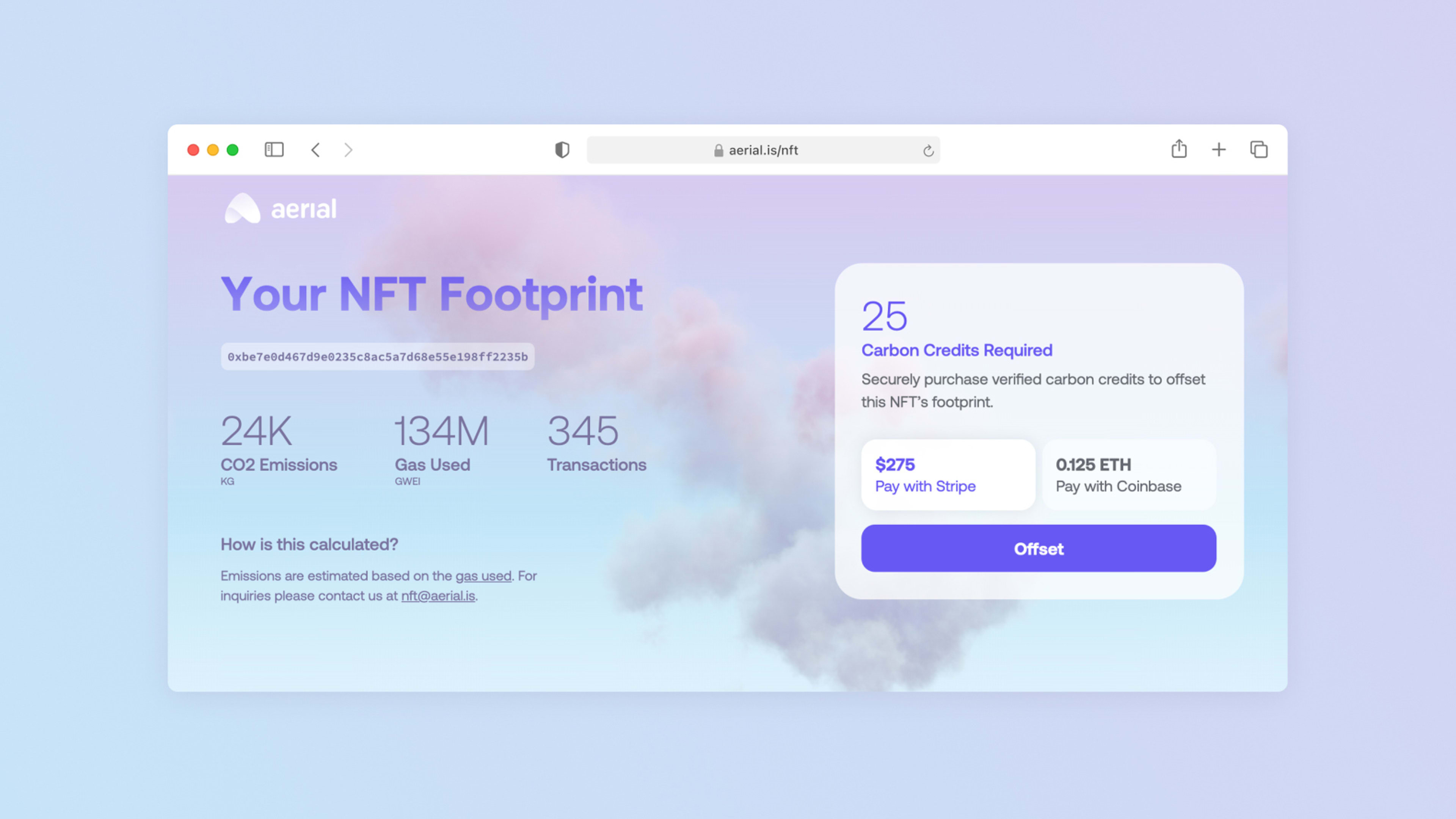Based on recent developments unfathomable to anyone born before 1990, it appears that people want to pay millions of dollars for digital images. Saving or screenshotting is not enough; internet users want to be sole and rightful owners of crypto-art, also known as NFTs, or nonfungible tokens, which can be images, video game assets, collectibles, or Jack Dorsey’s first tweet. Now, Nyan Cat is the new Mona Lisa, Cryptokitties are the new Impressionist paintings, and an artist named Beeple is the new Picasso. In a sale that’s a record so far, Beeple sold his Everydays piece, a collage of 5,000 pop culture images, through Christie’s for $69 million. (Here’s a copy. You don’t own it.)
After comprehending this phenomenon, the next thing to grasp is that the sales of these NFTs take place via the blockchain, which means that each transaction releases carbon—and a whole lot of it, because of the energy-devouring system used to verify the transactions, also known as the consensus mechanism. A budding startup, Aerial, whose app allows users to offset their carbon emissions—so far, mainly focusing on transportation footprints—has now turned to offsetting the gigantic carbon costs associated with environmentally costly NFT “drops.”
[Screenshot: Aerial]These NFT launches, or drops, have become highly anticipated virtual events. As bidding wars take place over a given time period, and NFTs are sold (and resold) on marketplaces such as Nifty Gateway, the cryptocurrency transactions require enormous amounts of electricity. Essentially, because the blockchain is a decentralized system, outside parties must verify the security and legitimacy of each sale. As a transaction takes place, computers operated by Ethereum miners around the world compete to solve complex math problems to check the data that’s been coded, which ensures the validity of the sale. It takes a lot of energy to power all the intense computing on the Ethereum blockchain. And, many miners are working in countries that rely heavily on nonrenewable energy sources.
The more popular an NFT, the more energy is likely used, due to an increased number of bids and resales, each of which requires more mining. The Weeknd’s drop, according to Aerial, likely emitted 86,000 kilograms of carbon, roughly the equivalent of 86 flights from New York to London. “Even one drop by someone who isn’t even that well known can easily exceed an individual’s travel for an entire year,” says Andreas Homer, Aerial’s cofounder and CEO. Adds Ebby Amir, cofounder and CTO: “That’s a pretty big footprint for something that exists purely digitally.”
Aerial soft-launched last October as a company allowing people to offset the carbon emissions produced primarily by their travel. The app can sift through users’ emails to find Uber rides and flights, and it converts those emissions into dollar amounts, which users can pay to environmental organizations that are restoring more carbon to the earth through practices such as forest conservation. The team had long considered tackling cryptocurrency emissions and prioritized it after NFTs suddenly became mainstream. “We want to build products that reach a wide audience, and that help raise awareness around sustainability and climate action,” Homer says.
When using Aerial’s app to offset a purchased NFT, users paste in the collection address of the NFT drop, or the wallet used to mint the token, which will generate an estimate of the carbon footprint. That’s calculated based on a measurement called Gas, which is essentially the transaction fee paid to Ethereum miners for the validation work (Gas is a fraction of the Ether currency, measured by a unit called a Gwei.) The higher the Gas number, the more energy likely consumed. The app then generates carbon credits and a dollar amount you can pay to offset the purchase. (Users can pay by Stripe—or Ethereum, of course.)
That money goes to one of two organizations. Since its soft launch, Aerial has been working with forest conservation projects that work to protect and plant trees, and thus sequester carbon, in California and Alaska forests. Now, it’s also teaming up with Charm Industrial, a company contracted by Microsoft and Stripe, that converts waste biomass into a carbon-rich bio-oil, which can then be used as a clean fuel or directly injected deep into the earth for sequestration, in a patent-pending process. Of each donation, after an operating fee for Aerial, 80% currently goes to forest conservation and 20% to bio-oil.
Aerial directly partnered with DJ and producer Calvin Harris for his recent drop of five NFTs, a collection called Technofish. Harris used the platform to offset his drop, but he also helped raise awareness about the environmental cost and mitigation options, by participating in a Clubhouse session with Homer and his followers. “Artists aren’t boiling the oceans,” Homer says, “but they do have a powerful platform and a big voice.” This education will be especially important if NFTs are to be more than just a fad and serve instead as an entry to blockchain transactions more broadly, which are energy-heavy in general: Annual sales processed by the Ethereum system use about the same amount of energy as the whole of Morocco.
Ethereum has been working on a long-awaited Ethereum 2.0, which would shift the consensus mechanism from competitive mining to an altogether new system that would eliminate competition, and therefore the energy consumption that goes with it. But that may be a year or two away. Until then, the NFT craze could rack up serious environmental costs. “We want to make sure that people have an opportunity to do something positive before the eventual move to Eth 2.0,” says Ari Sawyers, another cofounder of Aerial and the company’s head of design.
Recognize your brand’s excellence by applying to this year’s Brands That Matter Awards before the early-rate deadline, May 3.
